The refeeding process is essential for your child’s recovery from their eating disorder. During the refeeding process your child is at an increased risk of developing refeeding syndrome which is a little known aspect of eating disorder recovery. Unfortunately, the development of refeeding syndrome during the refeeding process can cause serious medical complications and it must be taken very seriously.
Watch the Video!
What is Refeeding Syndrome?
Refeeding syndrome can occur when your child starts to consume significantly more calories than they previously had been. It is important to know that it can occur regardless of whether your child is tube fed, consuming food orally, or a mix of both. Refeeding syndrome occurs when your child has very low electrolyte levels, specifically phosphorus, potassium, and magnesium, and in some cases low calcium and sodium levels in their blood.
Typically, when an individual has refeeding syndrome they are more likely to have low phosphorus levels, also known as hypophosphatemia, in comparison to their other electrolyte levels. Your healthcare team will likely order blood work routinely in the beginning stages of the refeeding process to monitor for refeeding syndrome.
The Causes of Refeeding Syndrome
If your child has been living with an eating disorder, they are likely in a malnourished state. When they are malnourished, their body switches to a catabolic state. A catabolic state means that your child’s body is breaking down their muscles and fat stores for energy. In a catabolic state, your child’s electrolyte levels will also decrease.
The Refeeding Process
When your child begins the refeeding process their body shifts from a catabolic to anabolic state. An anabolic state means that your child’s body is building their muscle mass and fat stores back up instead of breaking them down. In other words, your child’s body will shift from breaking down their fat and muscle mass to building up their fat and muscle mass when they begin the refeeding process. Prior to starting the refeeding process, your child may have depleted electrolyte stores.
At the start of the refeeding process your child’s body will not be used to consuming so many calories. Suddenly their blood sugar will increase. which will trigger the release of the hormone insulin into their blood. Insulin signals cells to take up the sugar in your child’s bloodstream as an effort to decrease their blood sugar levels.

Refeeding Syndrome
Refeeding syndrome occurs when the release of insulin into the bloodstream causes a decrease in any of your child’s already low phosphorus, potassium, magnesium, calcium and sodium levels in the bloodstream. This happens because your child’s cells uptake the electrolytes from the bloodstream. It is important to remember that your child’s blood work may show that one, a few or all of these electrolytes are low in their bloodstream – refeeding syndrome does not necessarily mean all of these electrolytes will be low in your child’s blood work.
Indications Your Child Has Developed Refeeding Syndrome
If your child is starting the refeeding process and has lightheadedness, tiredness, a drop in blood pressure, and a drop in heart rate they may have developed refeeding syndrome. If your child develops any of these symptoms, please seek medical help promptly. It is very important to seek medical help for your child because refeeding syndrome can cause serious medical complications such as heart problems and spasms.
Refeeding syndrome labs will show a decrease in phosphorus, potassium, magnesium, calcium or sodium levels. If your child is not having regular blood work taken during their refeeding process, the first indication that they may have developed refeeding syndrome will be their physical symptoms instead of the refeeding syndrome electrolytes.
Risk Factors
Risk factors include a low BMI, recent weight loss, a low caloric intake over the past 7-14 days and the presence of a prolonged eating disorder, such as anorexia nervosa, alongside starvation syndrome. While the presence of an eating disorder is a risk factor, individuals who are undergoing the refeeding process and are not living with an eating disorder can also develop refeeding syndrome.
How Can I Reduce my Child’s Risk of Developing Refeeding Syndrome?
Working with a healthcare team will decrease your child’s risk for developing refeeding syndrome. Typically, a doctor and registered dietitian nutritionist will work closely together to monitor and prevent refeeding syndrome. The healthcare team will likely regularly monitor your child’s blood work in order to detect any abnormalities, or sudden changes, in your child’s electrolyte levels before these problems can cause any harm.
At Change Creates Change Eating Disorder Care, when we talk about the refeeding process, we always say “start low and go slow”. When your child begins the refeeding process, it is very important that their caloric intake is low while still providing adequate nutrition. Only increase your child’s caloric intake as tolerated – make sure to go slow! A registered dietitian nutritionist will make sure the refeeding diet is uniquely created for your child’s needs and is closely monitored.
“Start low and go slow!”
Refeeding is an essential step to improving your child’s physical wellbeing. Another goal of refeeding is to improve your child’s mental state so that they can begin nutrition therapy and work towards their eating disorder recovery. However, during the refeeding process you must be cautious so that your child does not develop refeeding syndrome.
If you are interested in learning how Change Creates Change Eating Disorder Care can help reduce your child’s risk for refeeding syndrome and eating disorder recovery process, click the button below to book a free 15-minute consultation call with us. Change Creates Change is here to support you and your child throughout their eating disorder recovery.
*Reserved for Canadian residents.


